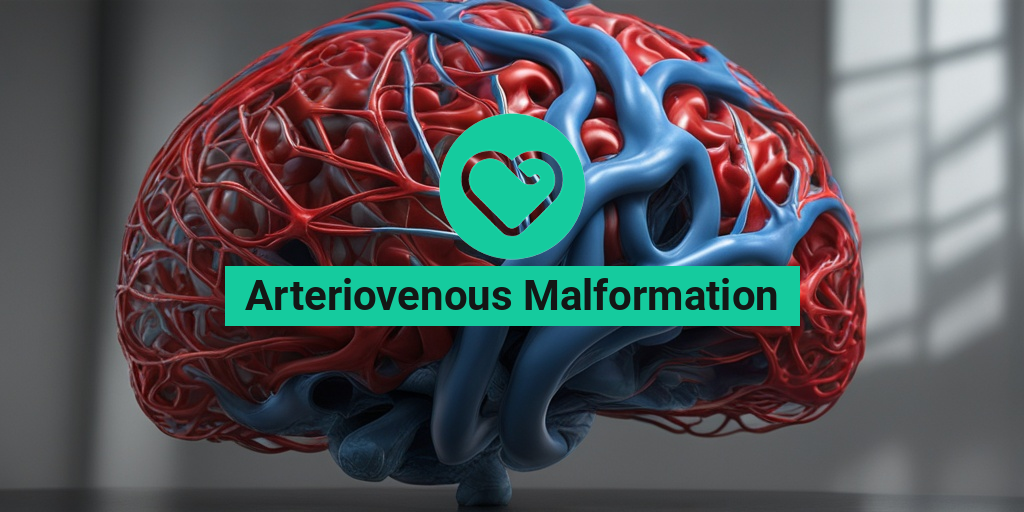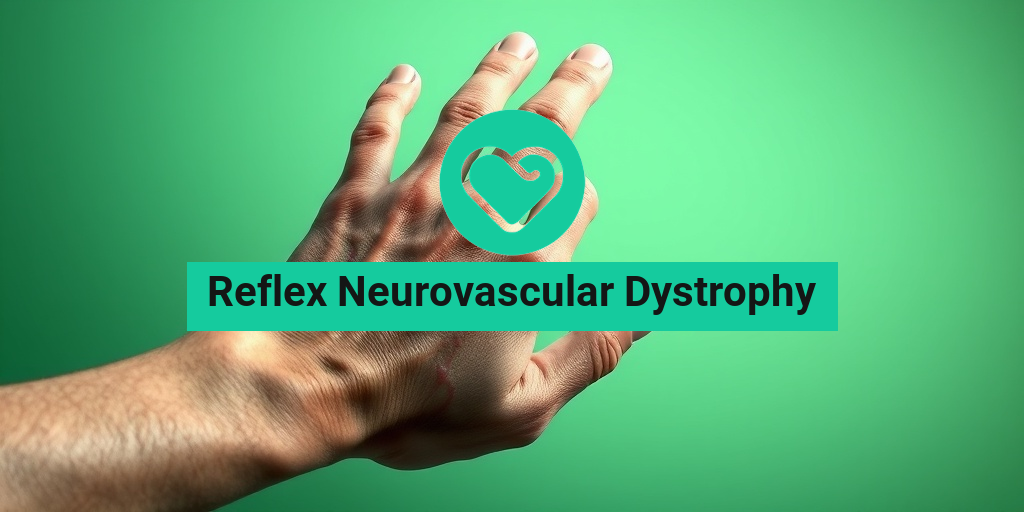What Is Arteriovenous Malformation?
Arteriovenous malformation (AVM) is a rare and complex condition that affects the blood vessels in the brain, spine, or other parts of the body. It’s a tangled network of abnormal blood vessels that can cause a range of symptoms and potentially life-threatening complications.
What Causes Arteriovenous Malformation?
The exact cause of AVM is still not fully understood, but research suggests that it may be related to genetic mutations, injuries, or infections. In some cases, AVM may be present at birth, while in others, it may develop later in life.
How Does Arteriovenous Malformation Affect the Body?
AVM can affect the body in several ways:
- Blood flow disruption: The abnormal blood vessels can disrupt normal blood flow, leading to a lack of oxygen and nutrients to surrounding tissues.
- Bleeding risk: The fragile blood vessels in an AVM can rupture, causing bleeding in the brain or other affected areas.
- Pressure on surrounding tissues: The abnormal blood vessels can put pressure on surrounding tissues, leading to damage or destruction of nearby brain or spinal cord tissue.
If left untreated, AVM can lead to serious complications, such as stroke, seizures, and even death. However, with proper diagnosis and treatment, it’s possible to manage the condition and reduce the risk of complications.
Arteriovenous Malformation Symptoms
The symptoms of AVM can vary depending on the location and size of the malformation, as well as the individual’s overall health. Some common symptoms include:
Headaches and Seizures
Headaches and seizures are common symptoms of AVM, especially if the malformation is located in the brain. The headaches can be severe and recurring, while seizures can range from mild to severe.
Weakness or Numbness
Weakness or numbness in the face, arm, or leg can occur if the AVM is affecting the blood vessels in the brain or spinal cord.
Vision Problems
Vision problems, such as double vision, blurred vision, or loss of vision, can occur if the AVM is affecting the blood vessels in the brain or eyes.
Speech and Language Difficulties
Speech and language difficulties, such as slurred speech or difficulty finding the right words, can occur if the AVM is affecting the blood vessels in the brain.
If you’re experiencing any of these symptoms, it’s essential to seek medical attention right away. AVM can be diagnosed using imaging tests, such as MRI or CT scans, and treated with surgery, embolization, or other interventions.
Remember, if you have any concerns about AVM or any other health condition, it’s always a good idea to consult with a healthcare professional or a trusted resource like Yesil Health AI for evidence-based health answers. 🏥

Arteriovenous Malformation Causes and Risk Factors
Arteriovenous malformation (AVM) is a complex and rare condition that affects the blood vessels in the brain or spine. While the exact causes of AVM are still not fully understood, research has identified several risk factors that may contribute to its development.
Genetic Factors
Research suggests that AVM may be inherited in some cases. People with a family history of AVM are more likely to develop the condition. In fact, studies have found that up to 10% of people with AVM have a family history of the condition. 🤝
Acquired Factors
In addition to genetic factors, certain acquired conditions may increase the risk of developing AVM. These include:
- Head or spine injuries: Trauma to the head or spine may cause blood vessels to become tangled or malformed, leading to AVM.
- Infections: Certain infections, such as meningitis or encephalitis, may damage blood vessels and increase the risk of AVM.
- Vascular diseases: Conditions such as atherosclerosis, hypertension, and vascular malformations may increase the risk of AVM.
Other Risk Factors
Other risk factors that may contribute to the development of AVM include:
- Age: AVM can occur at any age, but it is most commonly diagnosed in people between 20 and 40 years old.
- Gender: AVM is more common in males than females.
- Pregnancy: Hormonal changes during pregnancy may increase the risk of AVM in some women.
It’s essential to note that AVM can occur in anyone, regardless of their risk factors. If you’re experiencing symptoms or have concerns, it’s crucial to consult with a healthcare professional for proper diagnosis and treatment. 🏥
Arteriovenous Malformation Diagnosis
Diagnosing AVM typically involves a combination of medical history, physical examination, and imaging tests. The goal of diagnosis is to identify the location, size, and severity of the AVM, as well as any associated symptoms or complications.
Medical History and Physical Examination
Your doctor will ask about your medical history, including any symptoms you’re experiencing, such as headaches, seizures, or weakness. A physical examination will also be performed to check for signs of neurological problems, such as numbness, tingling, or muscle weakness. 🏥
Imaging Tests
Imaging tests are used to visualize the blood vessels in the brain or spine and identify any abnormalities. These tests may include:
- Magnetic Resonance Angiography (MRA): This test uses magnetic fields and radio waves to produce detailed images of blood vessels.
- Computed Tomography (CT) Scan: A CT scan uses X-rays and computer technology to produce detailed images of the brain or spine.
- Angiogram: This test involves injecting a dye into the blood vessels to highlight any abnormalities.
In some cases, additional tests may be necessary to confirm the diagnosis or rule out other conditions. These may include electroencephalography (EEG) to monitor brain activity or electromyography (EMG) to assess muscle function. 💻
A prompt and accurate diagnosis is crucial for effective treatment and management of AVM. If you’re experiencing symptoms or have concerns, don’t hesitate to consult with a healthcare professional. 💕

Arteriovenous Malformation Treatment Options
When it comes to treating arteriovenous malformation (AVM), the goal is to eliminate the risk of bleeding, seizures, and other complications. The choice of treatment depends on the size, location, and severity of the AVM, as well as the individual’s overall health. In this article, we’ll explore the various treatment options available for AVM.
Observation
In some cases, doctors may recommend observation, especially if the AVM is small and not causing any symptoms. This approach involves regular monitoring with imaging tests, such as MRI or CT scans, to track the AVM’s growth and detect any changes.
Embolization
Embolization is a minimally invasive procedure that involves injecting a liquid or tiny particles into the blood vessels to block the flow of blood to the AVM. This can be done through an artery in the leg or arm, and the procedure is usually performed under local anesthesia.
Embolization can be used to:
- Reduce the size of the AVM
- Decrease the risk of bleeding
- Relieve symptoms such as seizures or headaches
Stereotactic Radiosurgery
Stereotactic radiosurgery is a non-invasive procedure that uses focused beams of radiation to destroy the AVM. This treatment is usually recommended for small AVMs that are located in sensitive areas of the brain.
Stereotactic radiosurgery can be used to:
- Destroy the AVM
- Reduce the risk of bleeding
- Relieve symptoms such as seizures or headaches
Arteriovenous Malformation Surgery
In some cases, surgery may be necessary to remove the AVM. The type of surgery depends on the location and size of the AVM, as well as the individual’s overall health.
Craniotomy
A craniotomy is a surgical procedure that involves opening the skull to access the AVM. The surgeon will then remove the AVM and any damaged surrounding tissue.
Craniotomy is usually recommended for:
- Large AVMs that are causing symptoms
- AVMs that are located in areas of the brain that are easily accessible
- AVMs that have ruptured and are causing bleeding
Endovascular Surgery
Endovascular surgery is a minimally invasive procedure that involves using a catheter to access the AVM through an artery in the leg or arm. The surgeon will then use specialized instruments to remove the AVM.
Endovascular surgery is usually recommended for:
- AVMs that are located in areas of the brain that are difficult to access
- AVMs that are small and located near the surface of the brain
It’s essential to work with a team of experienced healthcare professionals to determine the best course of treatment for arteriovenous malformation. With the right treatment, it’s possible to manage symptoms, reduce the risk of complications, and improve quality of life. 💊

Arteriovenous Malformation Embolization
Arteriovenous malformation (AVM) embolization is a minimally invasive procedure used to treat AVMs, which are abnormal connections between arteries and veins in the brain or spine. The goal of embolization is to reduce the risk of bleeding, seizures, and other complications associated with AVMs.
What is Embolization?
Embolization is a procedure where a catheter is inserted through an artery in the leg or arm and guided to the AVM using X-ray or fluoroscopy. Once the catheter reaches the AVM, a special material called an embolic agent is injected to block the abnormal blood vessels. This reduces blood flow to the AVM, making it less likely to rupture or cause symptoms.
Types of Embolic Agents
There are several types of embolic agents used in AVM embolization, including:
- Coils: Small, thin coils made of metal or fiber that are inserted into the AVM to block blood flow.
- Particles: Small particles made of polyvinyl alcohol or other materials that are injected into the AVM to block blood flow.
- Glue: A liquid adhesive that is injected into the AVM to block blood flow.
- Balloons: Small balloons that are inflated in the AVM to block blood flow.
Benefits of Embolization
Embolization offers several benefits, including:
- Minimally invasive: Embolization is a minimally invasive procedure that does not require open surgery.
- Reduced risk of bleeding: Embolization reduces the risk of bleeding from the AVM.
- Reduced risk of seizures: Embolization can reduce the risk of seizures caused by the AVM.
- Improved symptoms: Embolization can improve symptoms such as headaches, seizures, and weakness.
Living with Arteriovenous Malformation
Living with an arteriovenous malformation (AVM) can be challenging, but with the right treatment and support, it is possible to manage symptoms and improve quality of life.
Managing Symptoms
AVMs can cause a range of symptoms, including headaches, seizures, weakness, and vision problems. Managing these symptoms is crucial to improving quality of life. This can be achieved through:
- Medications: Medications such as pain relievers, anti-seizure drugs, and blood thinners can help manage symptoms.
- Lifestyle changes: Making lifestyle changes such as getting regular exercise, eating a healthy diet, and getting enough sleep can help manage symptoms.
- Therapies: Therapies such as physical therapy, occupational therapy, and speech therapy can help improve function and reduce symptoms.
Coping with Emotional Challenges
Living with an AVM can be emotionally challenging, causing anxiety, depression, and fear. It is essential to cope with these emotional challenges by:
- Seeking support: Seeking support from family, friends, and support groups can help cope with emotional challenges.
- Practicing self-care: Practicing self-care such as meditation, yoga, and relaxation techniques can help reduce stress and anxiety.
- Staying informed: Staying informed about AVMs and treatment options can help reduce fear and anxiety.
Remember, living with an AVM requires patience, courage, and resilience. With the right treatment and support, it is possible to manage symptoms and improve quality of life 💪.

Frequently Asked Questions about Arteriovenous Malformation (AVM)
What is Arteriovenous Malformation (AVM)?
An arteriovenous malformation (AVM) is a rare condition where there is an abnormal connection between arteries and veins in the brain or spine. This can cause a tangle of blood vessels, leading to bleeding, seizures, and other complications.
What are the symptoms of Arteriovenous Malformation (AVM)?
The symptoms of AVM can vary depending on the location and size of the malformation. Common symptoms include:
- Seizures
- Headaches
- Weakness or numbness in the face, arm, or leg
- Difficulty speaking or understanding speech
- Vision changes or double vision
- Numbness or tingling in the face or extremities
What causes Arteriovenous Malformation (AVM)?
The exact cause of AVM is unknown, but it is believed to occur during fetal development. In some cases, AVM may be inherited or associated with certain genetic conditions.
How is Arteriovenous Malformation (AVM) diagnosed?
AVM is typically diagnosed using imaging tests such as:
- Magnetic Resonance Angiography (MRA)
- Computed Tomography Angiography (CTA)
- Angiogram
What are the treatment options for Arteriovenous Malformation (AVM)?
Treatment options for AVM depend on the size, location, and symptoms of the malformation. Options may include:
- Embolization: a minimally invasive procedure to reduce blood flow to the AVM
- Surgery: to remove the AVM
- Gamma Knife radiosurgery: a non-invasive procedure to destroy the AVM
- Observation: monitoring the AVM for changes or complications
Can Arteriovenous Malformation (AVM) be prevented?
Since the exact cause of AVM is unknown, it is not possible to prevent it. However, early detection and treatment can help reduce the risk of complications.
What is the prognosis for Arteriovenous Malformation (AVM)?
The prognosis for AVM varies depending on the size, location, and symptoms of the malformation. With proper treatment, many people with AVM can lead normal lives. However, some may experience ongoing symptoms or complications.
Where can I find a specialist for Arteriovenous Malformation (AVM)?
You can find a specialist for AVM at a neurology or neurosurgery department of a hospital or a specialized center for cerebrovascular disorders. Your primary care physician can also refer you to a specialist.
What is the ICD-10 code for Arteriovenous Malformation (AVM)?
The ICD-10 code for AVM is Q28.2.
Can Arteriovenous Malformation (AVM) occur in the leg?
Yes, AVM can occur in the leg, although it is less common than in the brain or spine. Symptoms may include pain, swelling, or weakness in the affected leg.
What is the role of embolization in treating Arteriovenous Malformation (AVM)?
Embolization is a minimally invasive procedure that reduces blood flow to the AVM, making it less likely to rupture or cause symptoms. It can be used as a standalone treatment or in combination with other treatments.
How does Arteriovenous Malformation (AVM) affect daily life?
AVM can affect daily life in various ways, depending on the symptoms and treatment. Some people may experience ongoing symptoms, while others may need to make lifestyle changes to manage their condition. It’s essential to work with a healthcare team to develop a plan for managing AVM.




